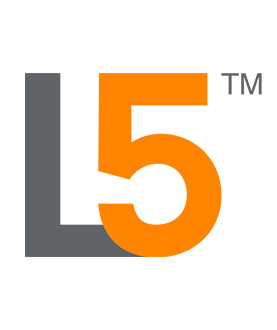Businesses that will continue to thrive in today’s economy and hope to excel in the economy of tomorrow recognize that inclusive design thinking (IDT) is a smart business strategy and key to their business model. Inclusive design thinking has emerged as a primary brand purpose strategy in recent years. As reported by Forbes, organizations from many industries can employ it across a variety of business functions including:
- Product and service design
- Retail concepts
- Merchandising in-stores and on websites
- Ad campaigns
- Talent acquisition strategies
- Social media
Inclusive product design matters. Read on to learn how it benefits businesses, consumers and society at large. It includes notable examples from a number of industries as well as tips for incorporating inclusive design thinking in an authentic manner. IDT should be a brand imperative throughout all firms. According to Russell Vea from branding consulting firm Atlantic57, “Acknowledging systemic challenges is the first step – but to create a more equitable world, brands must also take action.”
What is Inclusive Design Thinking?
Inclusive design thinking is a method of design thinking that results in products and services that can be used by a broader range of people, with the goal of making them work for everyone. Inclusive design is barrier-free and considers the full range of human diversity with respect to ability, language, culture, gender, age and other forms of human difference, according to OCAD University’s Inclusive Design Research Centre. As pointed out by Crème de Mint, a boutique graphic and web design studio, it’s meant to create access so that no user feels like the “other”.
Why is it Important?
Businesses can design better. For instance, accessibility is a growing problem with an aging population. According to the 2017 Canadian Survey on Disability, more than six million Canadians aged 15 and over (22% of the population) identify as having a disability, while the actual numbers are expected to be much higher. Over one billion people, or 15 per cent of the world’s population, experience some form of disability. Easter Seals, a nonprofit organization providing disability services, cited a 2004 research study from Environics Analytics that identifies that “only 10 per cent of Canadians believe that people with disabilities are fully included in society”.
Additionally, a poll carried out by Ipsos Research in May 2020 has revealed consumers care and want to see brands take action. Nine in 10 people said it’s important for organizations to show empathy and build loyalty. However, less than three quarters of those same respondents believed brands have realized this important fact. After 100 years, the Johnson and Johnson Company has finally expanded Band-Aid’s range of skin tones to accommodate people who don’t have white skin complexion.
Benefits of Inclusive Design to Society and Businesses

Accelerates Innovation
Since accessibility regulations require a high level of rigour and clarity in navigation, the design often produces more effective, intuitive and innovative products, according to a global consulting firm. In other words, “If a product is usable for a small set of people, it’s likely much more usable for very large sets of people.” Remote controls, email, wider door access, closed captions, hands-free headsets, OXO Good Grips are all innovations developed for people with disabilities, but embraced by a much larger audience.

Breaks Down Barriers
Elevating the voices of people who have been historically overlooked, and respecting their perspectives when designing products and services, improves the experience for everyone. And it invites overlooked groups to participate fully in society. It’s the right thing and the smart thing to do.

Increases Brand Relevance
Seventy per cent of Millennials are more likely to choose one brand over another if it demonstrates inclusion and diversity (Agility PR Solutions firm). This leads to more opportunity for brand advocates.

Enhances Company Culture
When a company puts effort into inclusive design, employees feel a greater connection and sense of pride working for the firm, a Microsoft thought leadership document showed.
Two Examples of Inclusive Design
- Nike’s Go FlyEase is the first hands-free shoe that has been designed to remove the barriers for athletes with disabilities. By using a “kickstand heel,” the shoe can be put on without use of hands. FlyEase is the embodiment of Nike’s mission statement that says, “Bring inspiration and innovation to every athlete in the world.” FlyEase was inspired by a letter written by Matthew Walzer, a 16-year-old with Cerebral Palsy preparing to enter his junior year of high school:
“My dream is to go to the college of my choice without having to worry about someone coming to tie my shoes every day. I’ve worn Nike basketball shoes all my life. I can only wear this type of shoe because I need ankle support to walk. At 16 years old, I can completely dress myself, but my parents still have to tie my shoes. As a teenager who is striving to become self-sufficient, I find this extremely frustrating and, at times, embarrassing.”
FlyEase works for people with long-term disabilities, people facing temporary disabilities, including pregnant women who cannot bend down easily and for anyone who wants an attractive slip-on shoe.
- Microsoft’s Xbox Adaptive Controller is a controller designed to help gamers of all shapes, sizes and abilities play games in a way that suits them. Initially, video game controllers were made with the assumptions that all players could hear, see and had two functioning hands. With this new adaptive controller, players can plug switches, buttons, pressure-sensitive tubes and other gear to control any function on a standard controller. This product is aligned with Microsoft’s mission statement: “To empower every person and every organization on the planet to achieve more.”
In an attempt to further democratize the Microsoft technology, CEO Satya Nadella has stated that Microsoft is striving to make all products and services accessible to everyone. Microsoft Word and Microsoft PowerPoint now embed accessibility features into their core products. Learn more about inclusive design thinking from Microsoft’s Inclusive Design toolkit.
Other Notable Examples of Inclusive Product Design
The following examples of inclusive design are setting the stage for other industry players to follow suit.
- Crayola’s Colors of the World is a box of crayons containing 24 skin tone shades.
- Google’s Chromebooks and G Suite are great tools for students to access digital education platforms without the need for internet. This is increasingly important as the pandemic has forced many students to switch to digital learning platforms in a world where two-thirds of school-aged children have no internet access at home.
- Gilette’s TREO is the world’s first razor designed for caregivers to shave someone they’re caring for.
- Netflix Captions enable the delivery of all video content with captions for broader video access.
- Fenty Beauty by Rihanna sells 40 shades of coloured foundation, enabling women to find the one that best matches their skin tone.
Authentic Inclusive Design
Building inclusive design isn’t a buzz word – it’s a strategy that takes authenticity. To have meaningful impact, companies must adopt an inclusive mindset. This includes leveraging inclusive design teams and environments, factoring in accessibility from the outset (rather than treating it as an extra step), and embracing inclusive personas throughout the entire design process that involves research, co-creation and user testing. Ultimately, inclusivity must be at the core of the brand’s identity. To achieve this, companies may need to rethink their internal and external strategies in a major way.
While more and more brands are beginning to recognize the importance of inclusion and accessibility, many don’t offer products and services for wider demographics.
Can you imagine industries where every person – regardless of their physical or emotional state – could feel empowered?




